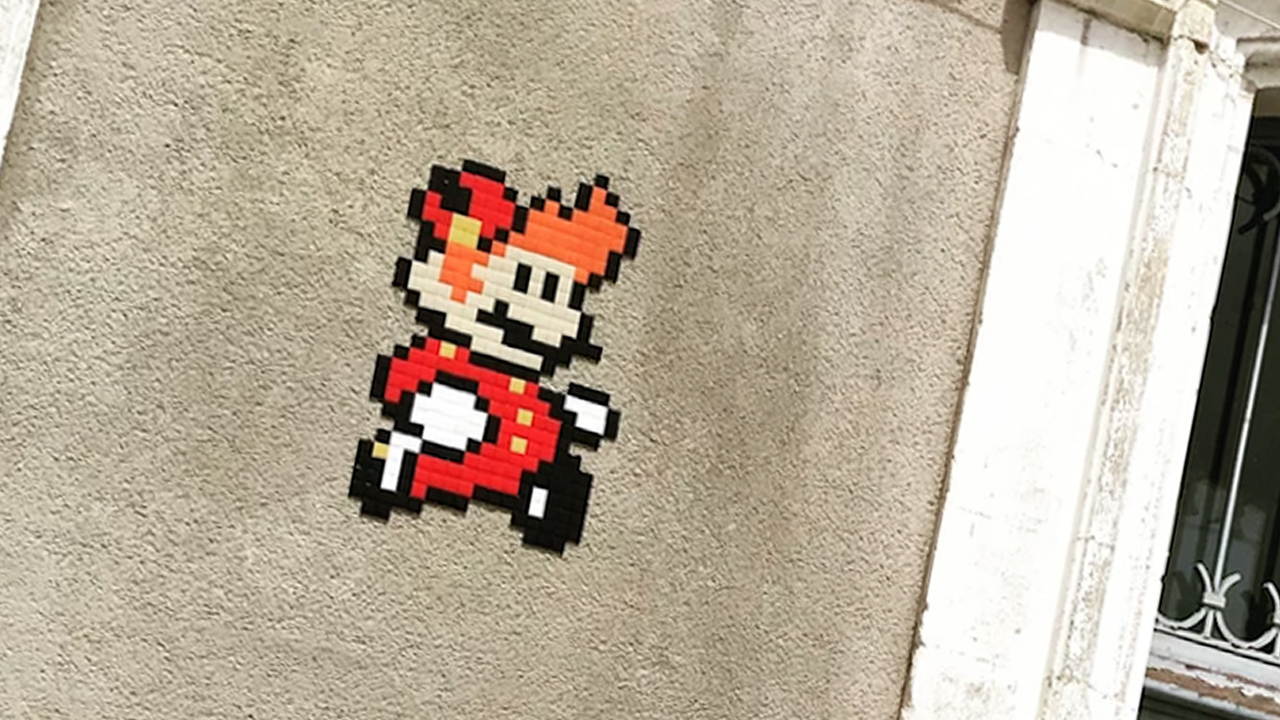For anyone not in the know, A Boy and His Blob has a surprisingly deep history, going all the way back to 1989. Originally released on the NES under the title A Boy and His Blob: Trouble on Blobolonia, it was since re-imagined for the Wii by developer WayForward, dropping the subtitle in the process. As far as reboots go it proved to be incredibly successful, and we even declared it “one of the most beautiful and polished Wii releases”. 12 year later, A Boy and His Blob still holds up in terms of visuals, but with a plethora of incredible puzzle platformers in the years since the gameplay has lost some of its standout sheen.
The narrative behind A Boy and His Blob is fairly minimal for the most part. Having escaped the planet Blobolonia, the titular ‘blob’ lands on earth and is greeted by our hero, known only as ‘boy’. The two must then team up to navigate a series of levels and ultimately defeat an evil emperor. As the boy is next to useless when it comes to abilities (no offence, mate), he must utilise the blob to gain access to areas that may otherwise be blocked off. Not only this, but each level contains various enemies that must be either avoided altogether or dispatched by utilising the immediate environment.
From the start of the game you’re able to feed your blob various coloured jelly beans in order to alter its form. These forms are then used to overcome obstacles; you can change the blob into a springboard, a parachute, a bouncing ball, and much more. You have an unlimited supply of jelly beans so you’re never in any danger of running out, however accessing the different abilities can be a bit of a pain. Holding down ‘Y’ brings up the ability wheel, with each coloured jelly bean and their corresponding ability visible as you move the dial around. This works perfectly fine, but since you need to swap abilities frequently during each level it’s a bit of a time sink to access the wheel every single time. We reckon the game would have benefitted from mapping certain abilities to the d-pad for quicker access.
Otherwise though, the various abilities are used pretty well for the most part, and as you progress through the game you’ll automatically gain new, more interesting forms as you start each subsequent level. Earlier levels provide you with a small selection of jelly beans to choose from – generally 3 at the most – but the later ones give you a larger selection, and you can be confident that you’ll need to use every ability at least once in order to complete the level. You might think this sounds pretty tricky in theory, as you’ve got quite a few different coloured beans to juggle, but when you encounter an enemy or obstacle it normally highlights which jelly bean is required in order to progress.
What can be frustrating, however, is the fact that the blob will always stay fixed into whatever form it’s transformed into, meaning once you’ve successfully navigated an obstacle, your blob will be left behind until you manually call it back with ‘X’. More often than not, it takes a few good yells to get the blob to return to your side, which needlessly adds time to an otherwise pretty slick and well-paced experience.
The game is, by and large, a linear affair. Split into separate worlds – each of which contains ten levels in total – you simply need to make your way through each one before encountering a boss at the end. To mix things up a bit each level contains three chests for you to collect as you go, with some tucked away in hidden areas, and others held by formidable enemies. Collecting these unlocks special levels to tackle in between the normal stages, which makes for a pleasant change of pace.
We thought the game looked fantastic back in 2009, and it absolutely still does today. The hand drawn visuals really stand the test of time, and the fantastic environments complete with cascading waterfalls and starry skies give a wonderful whimsical feel to the game. The animation is similarly spectacular; the boy’s movements feel smooth whether you’re running, jumping, or gliding off a cliff with the parachute. We particularly enjoyed the blob’s transformations into its various forms, as its body wiggles and jiggles before morphing into a door or an anvil.
In terms of audio design, the music is pleasant enough for the most part, but no individual track stands out as being particularly memorable. Having said that, the game’s soundtrack does change very well to suit particular moods; whether you’re wandering around your comfy tree house or standing face-to-face against a giant gooey snake, you can be sure the music will fit in well with each scenario.
Conclusion
A Boy and His Blob hasn’t changed since its release back in 2009, but it’s still well worth checking out if you’re after a decent puzzle platformer. The visuals still look incredible after all these years, with spectacular animation to boot. Some aspects of the game feel a bit outdated by comparison, with the inability to map certain abilities being a key culprit. Nevertheless it remains a fun, breezy experience, and one that the younger generation of gamers in particular will adore.








